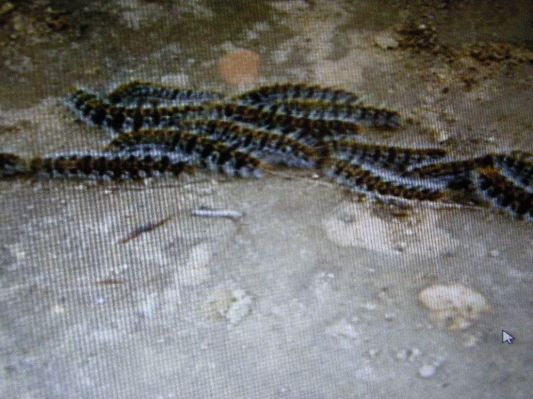What is the most dangerous animal in Spain?
Monday, March 8, 2010 @ 5:35 PM
You might think it is some kind of venomous snake, scorpion, spider or maybe even Spanish drivers!! but no it is something quite small…….a caterpillar! …………yes a caterpillar. The most dangerous animal in Spain is the ‘procesionaria del pino’ or Processionary Caterpillar !!
You and your pet more likely to endanger yourselves by getting too close to an innocent looking line of caterpillars that can be found from December to April of each year.
Processionary Caterpillars are so called because they form processions, nose to tail, as they leave the nest prior to changing into moths. The “nests” are fist sized or larger balls of spun filaments, usually lodged in fairly high branches of pine trees. There can be up to 300 caterpillars in a nest.


THE BEST ADVICE is to avoid these innocent looking creatures at all costs. The caterpillars are covered in tiny barbed hairs which are their defence mechanism.
IF HUMANS come into contact with these hairs, they can cause reactions ranging from mild inflammation and irritation to severe anaphylactic shock. Once on your skin a rash soon forms which can be incredibly itchy. Medical advice should be sought if you are unfortunate enough to experience this.
FOR PETS – dogs and cats can get too close to the intriguing procession and may pick up the hairs onto their paws, these irritate and so they lick them. Once the hairs are on the lips/tongue it will induce itching, swelling and possibly vomiting. Look out for the symptoms of small white spots in the mouth and on the tongue, excessive drooling and chomping. In some cases partial amputation of the tongue is the only course of action. If you suspect your pet has come into contact with these caterpillars take it to your vet immediately.
What should you do…..?
DO NOT touch these creatures, leave well alone. DO NOT try and squash them as this may release their hairs into the air where they can be inhaled or come to rest unnoticed on clothing spreading the irritation.